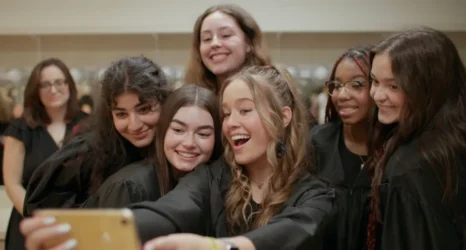The Lazarus Effect focuses on reviving the dead—hardly a new concept—and few texts have done as well as Mary Shelley’s 1818 Frankenstein. The Lazarus Effect is no Frankenstein, but, as in that novel, betrayal, questionable ethics and a fascination with the possibilities of science frame the narrative.
The plot follows a team of medical scientists working on a serum to “give doctors time” to resuscitate patients before brain damage. Code name: The Lazarus Project. The film opens with them working on a dead pig. They move on to a dead dog, then a dead human, with various bits of character building, plot threads and obvious revisits to films such as Flatliners and Pet Semetary thrown in the mix.
Unlike Mary Shelley’s masterpiece, The Lazarus Effect has a female at its center: Zoe, a brilliant neuroscientist, who unlike Victor Frankenstein, is both doctor and monster. Olivia Wilde brings depth to the role, moving effortlessly from endearing UC Berkeley go-getter to evil-eyed she-demon. She impressively embodies Zoe’s struggles to come to grips with her resurrected reality, helping viewers empathize with the transformation. This was deliberate on her part. As she puts it,
When you’re playing a villain, you feel like you’re fighting for their story to be heard when everyone dismisses them as evil. … It’s your job to show their side of the story.
As in Frankenstein, we are encouraged to have compassion for the monstrous turn her character is taking. With piercing eyes, Wilde dominates the film and making us long for her appearance on screen, even though we know it will bring mayhem. Acutely aware of how the now-infinite power of her mind, combined with a particularly traumatic childhood event, is filling her with murderous rage, Zoe is cognizant of what is happening and struggles to maintain her humanity.
Wilde is certainly the heart of the film, but one wishes she were given a better film to be in. Less philosophical than Shelley’s work, the film has a let’s-throw-a-bit-of-everything-in-and-see-what-sticks feel to it. Part paranormal horror, part science experiment gone wrong, part love story, part corporate critique, the film would be stronger if it narrowed its focus, especially as it runs a scant 83 minutes. Don’t get me wrong: It didn’t need to be longer. It just needed to weed out some of the extraneous narrative threads.
While the film is not a must-see for various reasons, including a story that is not fully-fleshed out and well-worn horror components that feel tacked on, it at least offers some meaty food for thought beneath its rather thin-skinned format. There are some interesting components to the film, including philosophical explorations of what happens after death and how our own personal mental demons may, in fact, be scarier than the lack of heaven or the existence of hell. The part I enjoyed most was the way it paired the “evil female” with the “final girl” (the horror trope of the last woman alive to confront the killer), bringing in bits of sisterhood, mother-daughter nurturing and even hinting at the notion that if one is to be “saved” one cannot look outside oneself—whether to a male, a career or a scientific discovery.
The part that irked me most was the delayed-wedding backstory. While Zoe is dedicated to the Lazarus Project, she laments that her fiancé Frank keeps putting off their marriage. Thankfully their cohabitation is not tied to sinfulness (Zoe is Catholic) or female failure (there is even a nice little discussion of dental dams thrown in), but this aspect of Zoe’s character still rubs the wrong way. Once again, a woman’s longing for marriage is related to her evil turn—this time with a wedding-ring zinger to boot.
The twist at the end of the film opens the space for a sequel, which is regrettable. It would have been better if the movie had instead spent longer musing over the philosophical conundrums that are never fully examined. Binaries such as religion verses science, career verses marriage, ethical verses unethical are bandied about as if merely referencing them will give the film weight. While they do add some flesh to the otherwise skeletal narrative, one hopes that this particular ilk of Lazarus narrative will not rise again, or if it does will at least reward viewers with more interactions between the evil female and the final girl.
Get Ms. in your inbox! Click here to sign up for the Ms. newsletter.





